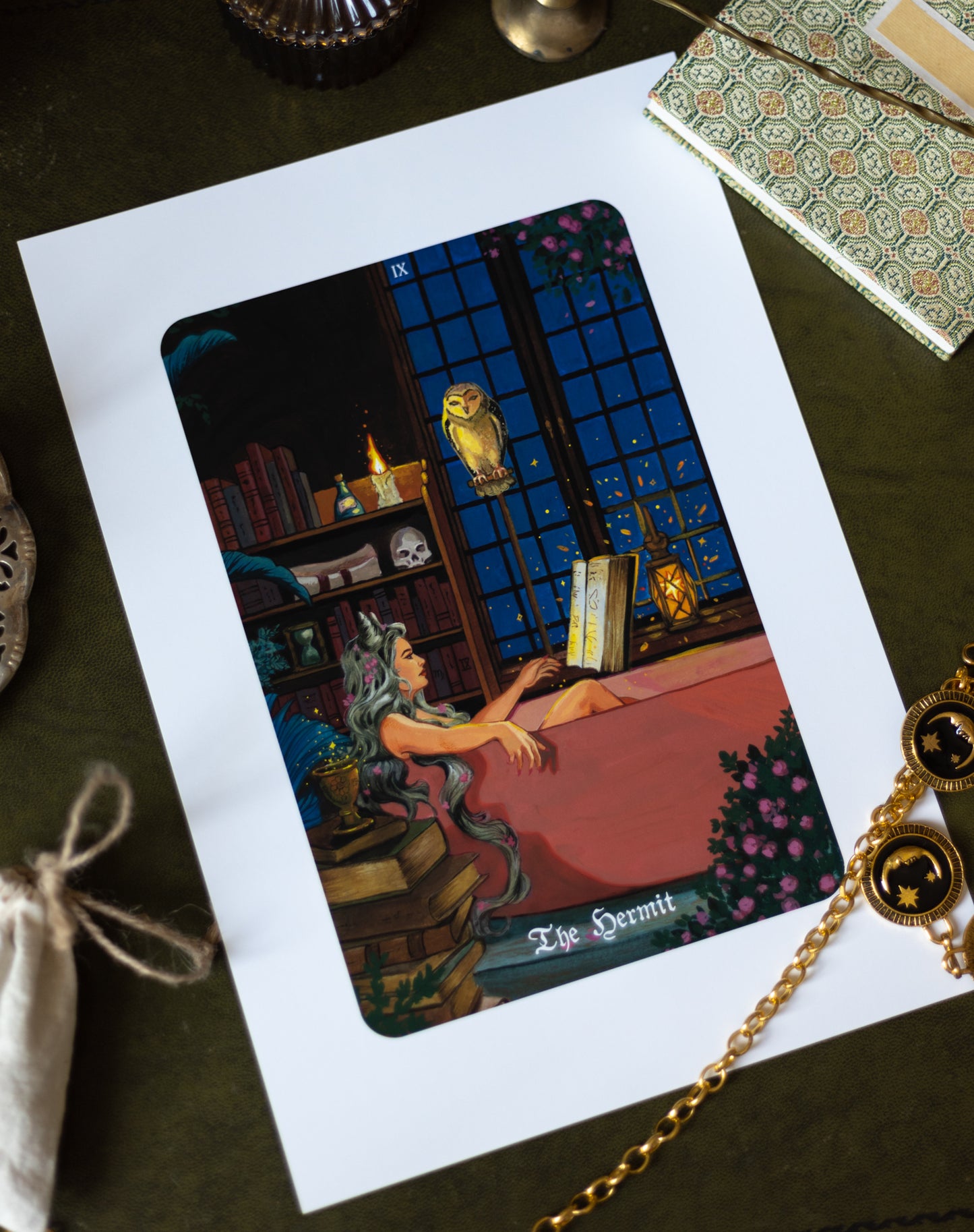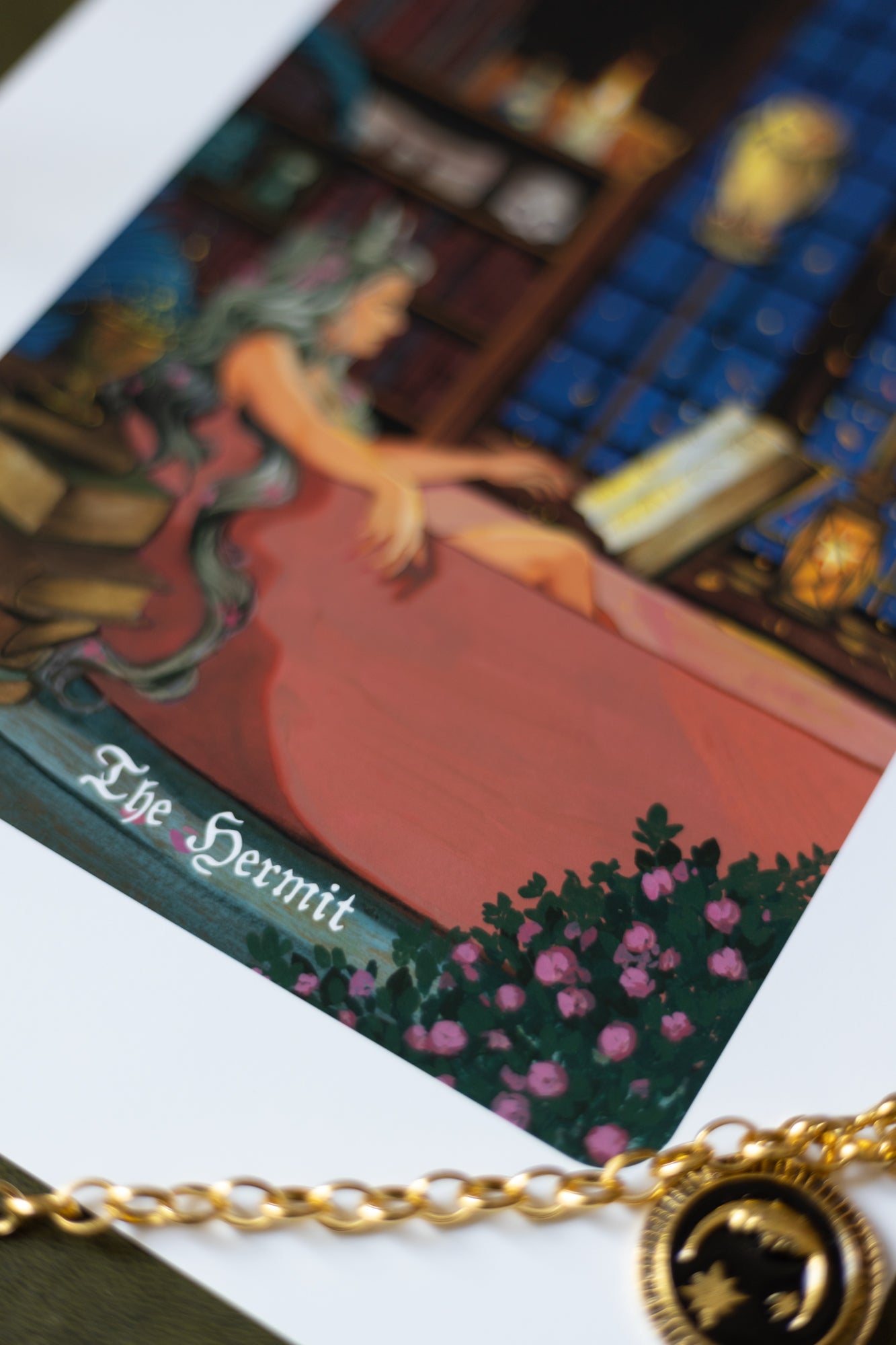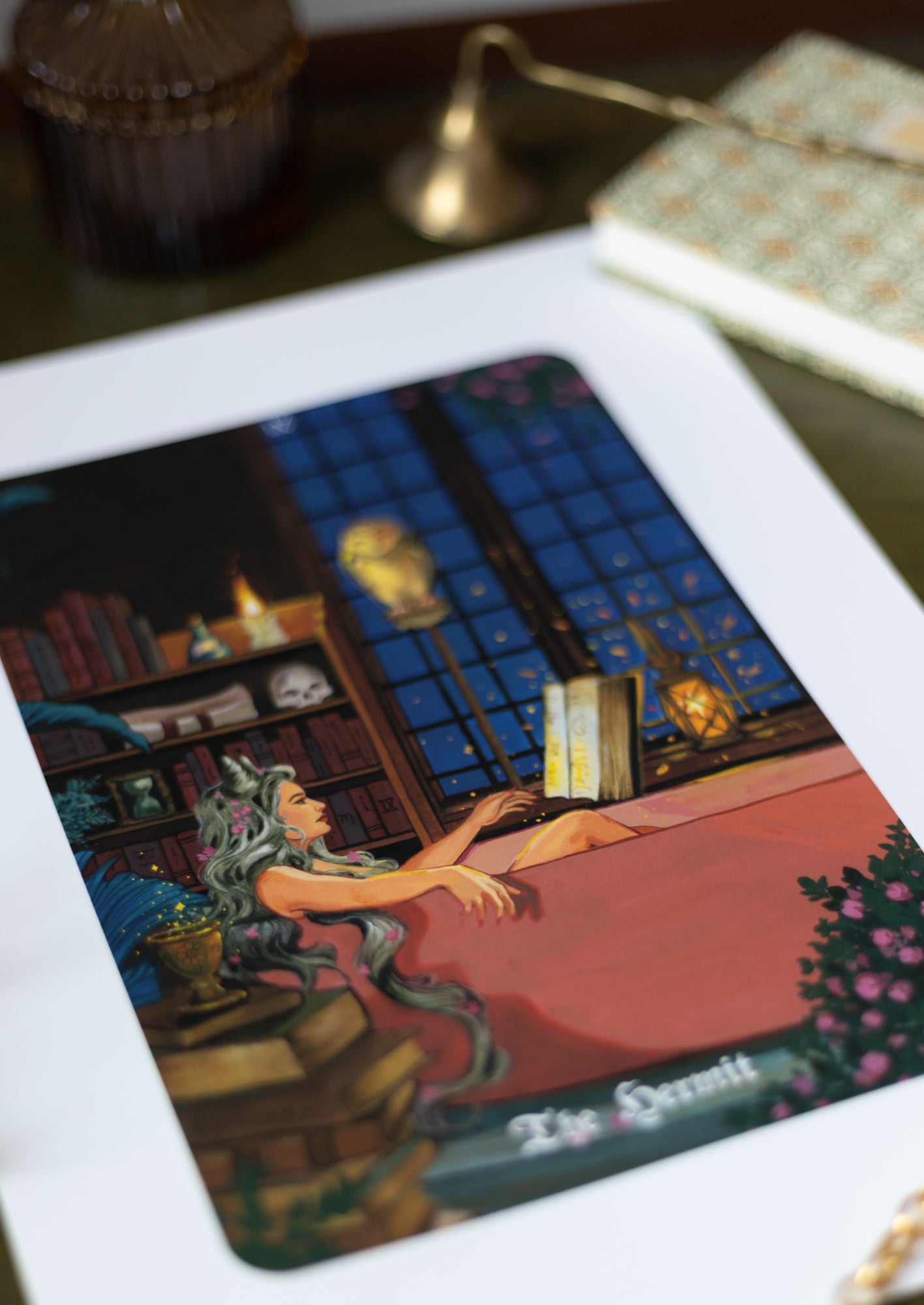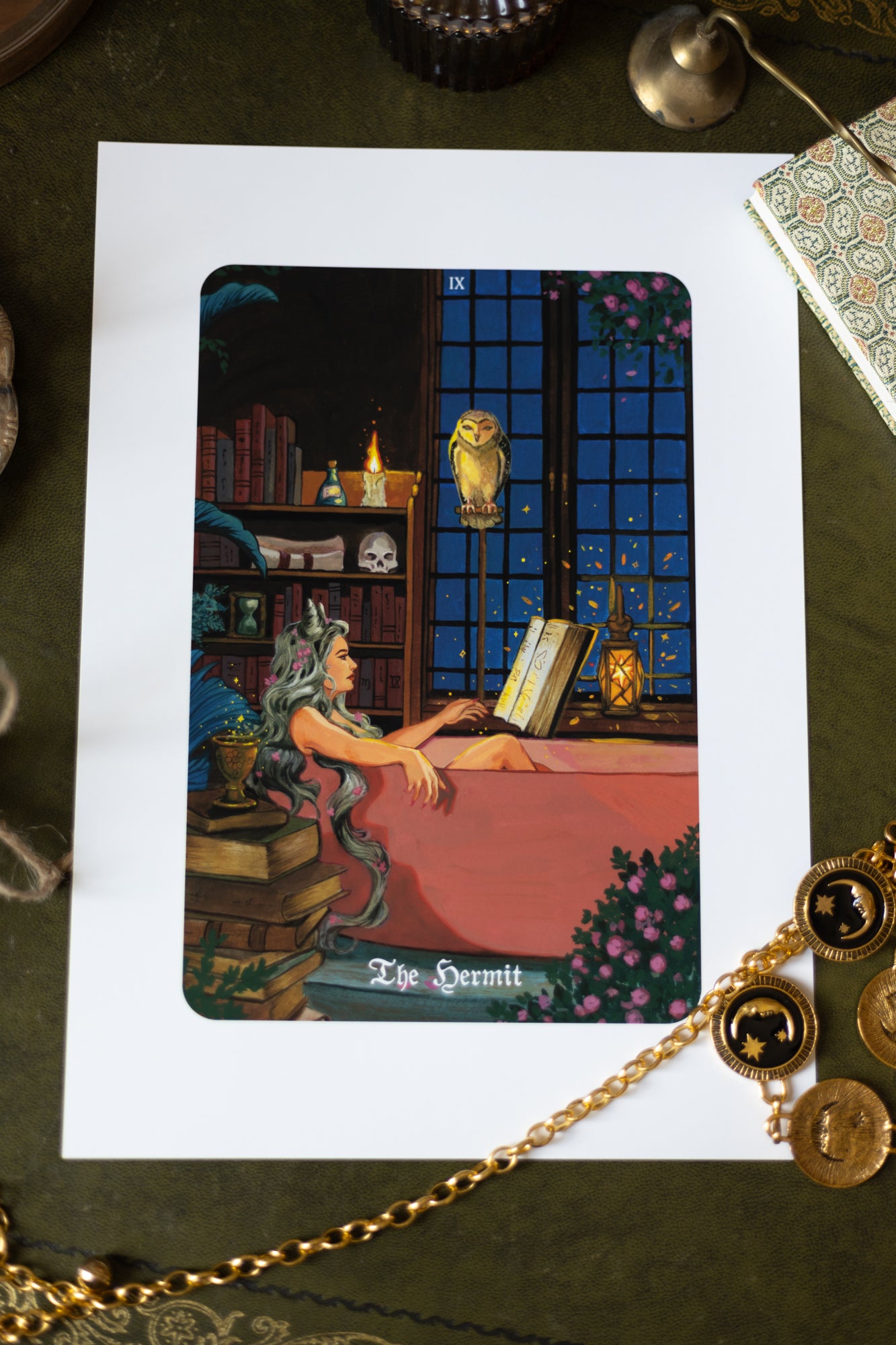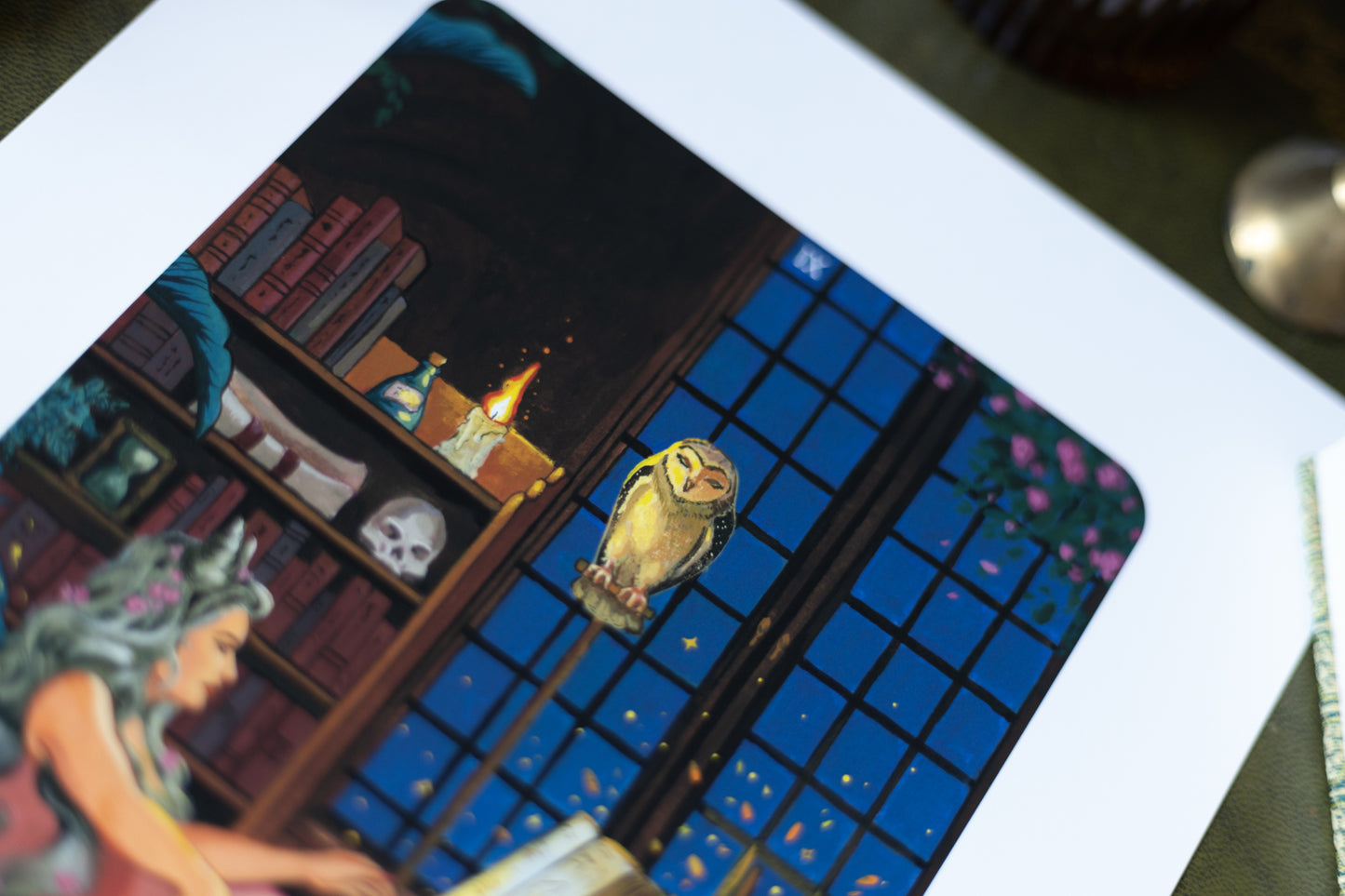9. Hermit - Poster
9. Hermit - Poster
SKU:PSTHRMA4AM820250107
Couldn't load pickup availability
Strength - A4 poster 210x297 mm || 8.3"x11.7" - 189g/m²
Printed on professional quality archival matte paper with archival pigment inks (189gsm). Paper is very smooth and has more cooler undertone in Poster version compare to Fine Art Print.
One can distinguish between Posters and Fine Art Prints based on the paper they are printed on and the lack of an additional protective coat. This difference helps to offer a more cost-effective alternative while also ensuring that the quality standards are upheld to the highest degree possible. Fine Art Prints also have a bit more contrast and depth to it thanks to the texture in paper.
The colors of the print may vary slightly from what you see on your screen due to differences in display settings.
Storage Instructions:
If you need to store your print, place it in an acid-free, archival-quality sleeve or folder. Store flat in a climate-controlled environment to prevent curling or damage. Avoid rolling fine art prints as this can cause creases. Furthermore, do neither store or display prints next to air conditioners or humidifiers nor in rooms where work is being carried out using paints, varnishes or oil containing solvents. Pollutant concentrations can occur at the air inlets and outlets and cause discolouration.
Share
Usage Recommendations & Care
Usage Recommendations & Care
To achieve optimum printing results and the desired print permanence, please follow the recommendations*:
- Clean Hands: Always handle prints with clean, dry hands to avoid transferring oils, dirt, or moisture.
- Gloves: Consider wearing cotton or nitrile gloves to prevent fingerprints and smudges.
- Edges Only: Hold the print by the edges or use both hands to support it from underneath.
- Ambient and environmental conditions like temperatures, humidity, light intensity, indoor ozone and air pollutants can influence the print permanence.
Store printouts at temperatures from 15° to 25° (60° to 77°F) and with a relative humidity from 40% to 60%.
- When using synthetic foils, adhesives and adhesive tapes, make sure that they are archival.
Plasticisers and solvent-based ingredients can discolour the print. Use only synthetic foils, adhesives or adhesive tapes without solvent-based ingredients and plasticisers.
- Furthermore, do neither store or display prints next to air conditioners or humidifiers nor in rooms where work is being carried out using paints, varnishes or oil containing solvents. Pollutant concentrations can occur at the air inlets and outlets and cause discolouration.
- For maximum print permanence display the prints under museum glass.
UV Protection:
Exposure to direct sunlight can fade and damage your print.
For maximum print permanence display the prints under museum glass.
Framing:
Use archival-quality materials for framing. Acid-free mats and backing will prevent yellowing and deterioration. Ensure the print is not in direct contact with the glass to prevent moisture damage. When using synthetic foils, adhesives and adhesive tapes, make sure that they are archival.
Displaying:
When displaying your print, choose a location away from direct sunlight and away from sources of heat and moisture. Indirect, diffused light is best to prevent fading.
Storage:
If you need to store your print, place it in an acid-free, archival-quality sleeve or folder. Store flat in a climate-controlled environment to prevent curling or damage.
Cleaning:
Dust your framed print with gentle soft brush. If your print is not framed, it's best to avoid cleaning the surface directly.
For the glass or acrylic cover of framed prints, use a gentle cleaner that does not contain ammonia.
Regular Checks:
Periodically check your print for signs of damage, such as fading, discoloration, or moisture.
Early detection can prevent permanent damage.
Professional Advice:
If you're unsure about framing or displaying your print, consult with a professional framer who is experienced with archival techniques.
Conservation:
If a print becomes damaged, consult a professional conservator who specializes in paper and prints. Do not attempt to repair valuable prints yourself.
By following these guidelines, you can help ensure that your fine art prints remain in excellent condition for many years, preserving their beauty and value.
Disposal Instructions:
If the print is on paper without significant coatings or lamination, it may be recyclable. Recycling capabilities vary by region. It's advisable to check with local recycling programs to determine if they accept photo prints.
Materials used
Materials used
189gsm, acid-free, matte photo paper. Paper type: wood pulp (α-cellulose)
Epson UltraChrome Pro 10 pigment inks
Warnings
Warnings
- Choking hazard. Not suitable for children under 3 years. Keep out of reach of young children. Product and packaging is not a toy.
- All products are intended for decorative purposes only. They are not suitable for ingestion or any form of misuse.
- Prints are not widely recyclable. Dispose of responsibly in general waste or consult local guidelines.
